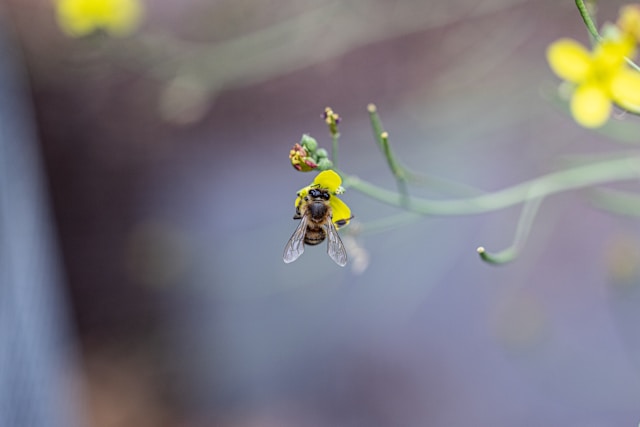
Poisons Information Centre – 13 11 26
There are many Australian species that bite or sting, such as insects, bees, wasps, ants, mosquitos, ticks, scorpions, caterpillars, centipedes, spiders, snakes and sea creatures. Some bites and stings may be harmless and not require treatment, others may be venomous or cause a severe allergic reaction (anaphylaxis) and require medical treatment promptly.
Allergies to venoms from stinging insects (bees, wasps and ants) are one of the most common causes of severe allergic reactions (anaphylaxis) in Australia. Symptoms of anaphylaxis include:
- A widespread rash, or severe itching.
- Swelling of the tongue or throat.
- Coughing, wheezing, or trouble breathing.
- Abdominal pain.
- Diarrhoea.
- Vomiting.
- A drop in blood pressure (shock) or fainting.
Anaphylaxis from stinging insect allergy results in an average of three deaths per year in Australia. Those with a known allergy should be seen by a medical specialist (clinical immunology/allergy specialist) to develop a strategy for managing subsequent bites or stings and have two adrenaline auto-injectors (e.g. EpiPen®, AnaPen®) readily available to treat anaphylaxis.
People at greater risk of severe reactions to spider venom include babies, young children, the elderly and people with an existing heart condition.
In the event of a venomous bite or sting:
- Call triple zero (000) for an ambulance in an emergency.
- Reassure the person and keep as still as possible.
- Determine the appropriate first aid action for the type of bite or sting:
- Pressure Immobilisation Technique (PIT) for funnel web and mouse spiders, land snakes, sea snakes, blue ringed octopus and cone snails.
- Ice/cold packs (not directly on the skin) for red back spiders, other spiders (except funnel webs), wasps, scorpions, bees (remove the stinger), ants, leeches (once removed), centipedes and caterpillar stings.
- Hot water immersion (not scalding) for stingrays, stonefish, cobblerfish, and bluebottles (after tentacles are removed).
- Vinegar for tropical jellyfish such as Box and Irukandji.
- When using the PIT, apply pressure to the wound with a firm (10-15cm wide) elasticised bandage – use a second wide bandage starting at the toes or fingers and bandage up the limb as far as possible.
- Do not remove the bandage at any stage and mark the bandage at the site of the bite or sting. This will enable medical staff to locate the site for inspection without removing the bandage.
- Do not apply a tourniquet.
If the person collapses or stops breathing, you will need to apply CPR (cardiopulmonary resuscitation) until medical help arrives. Remember – CPR takes precedence over other first aid if the person is not breathing.
If you need more information call the Poisons Information Centre on 13 11 26 – seven days a week, 24 hours a day.
Important note: NEVER apply the pressure immobilisation technique to a red back spider bite; it will increase the severity of the pain and cause more damage to the tissue around the bite site. First aid is to wash the area and apply a cold pack for 20 minutes ensuring it doesn’t come into direct contact with the skin, and to seek medical help.
For more information on bites and stings first aid, visit Better Health Channel.
Fast facts:
- Many Australian species can bite or sting, some may be harmless, and others may be venomous or cause allergic or anaphylactic reactions.
- If you’re known to have a severe allergy to the bite or sting of a species – have a management plan and carry an adrenaline auto-injector (EpiPen® or AnaPen®).
- Do not use tourniquets, cut the puncture site or try to suck the venom from a bite.
- Seek medical assistance immediately
- Call triple zero (000) for an ambulance in an emergency.
References used for this topic
More information:
Poisons Information Centre
Call 13 11 26 – 24 hours a day, 7 days a week
Poisons Information Centre
Victorian Poisons Information Centre
Call 13 11 26 – 24 hours a day, 7 days a week
More information from Austin Health
Australian Bites and Stings
Visit website
Australian Museum
Insect bites and stings
Royal Children’s Hospital Melbourne
Insect bites and stings in children
Better Health Channel
Applying CPR
University of Melbourne
Preventing venomous injuries with the new Australian Bites and Stings APP
Clinical care:
Austin Health
First aid for bites and stings (including Pressure Immobilisation Technique)
Safer Care Victoria
Management of snake bite
Research & reviews:
ASCIA – Australasian Society of Clinical Immunology and Allergy Limited
Allergic reaction to bites and stings
Photo by Sarah Damen on Unsplash
|
|